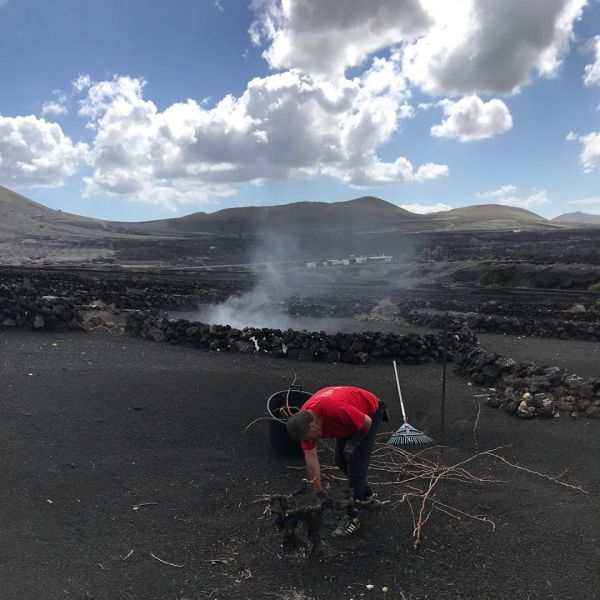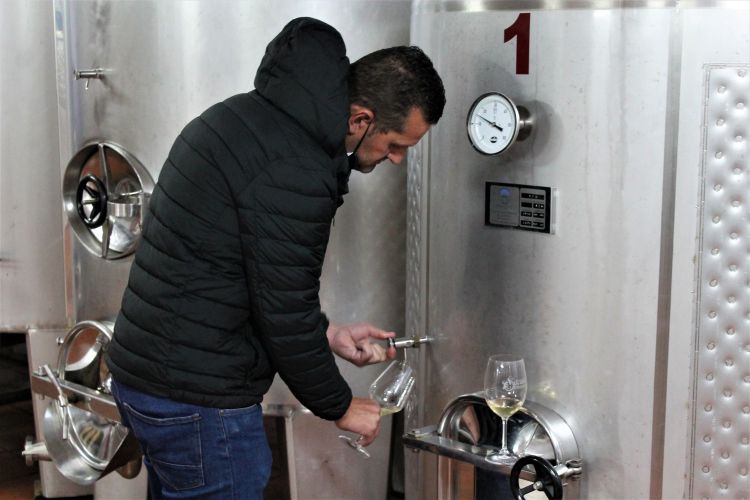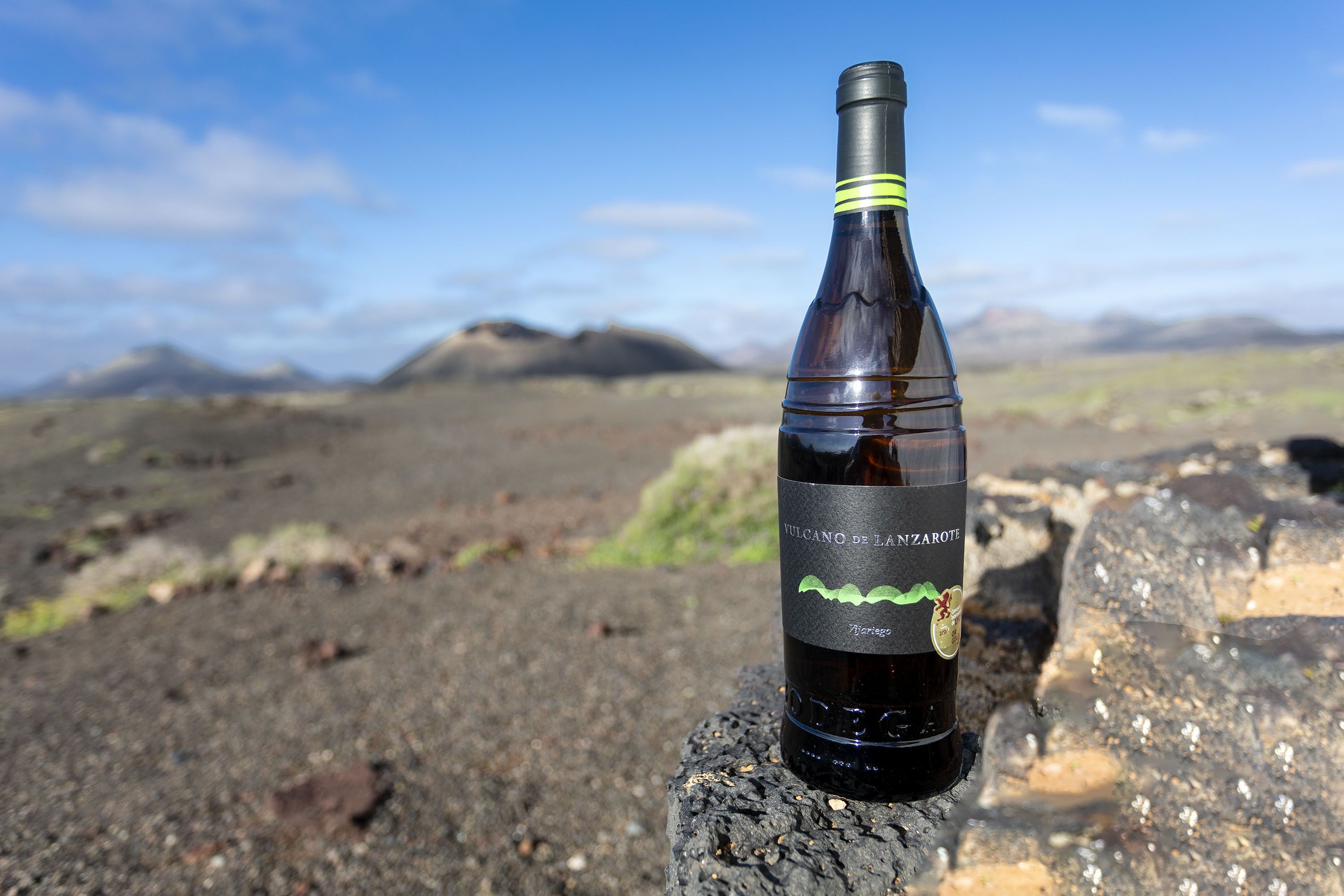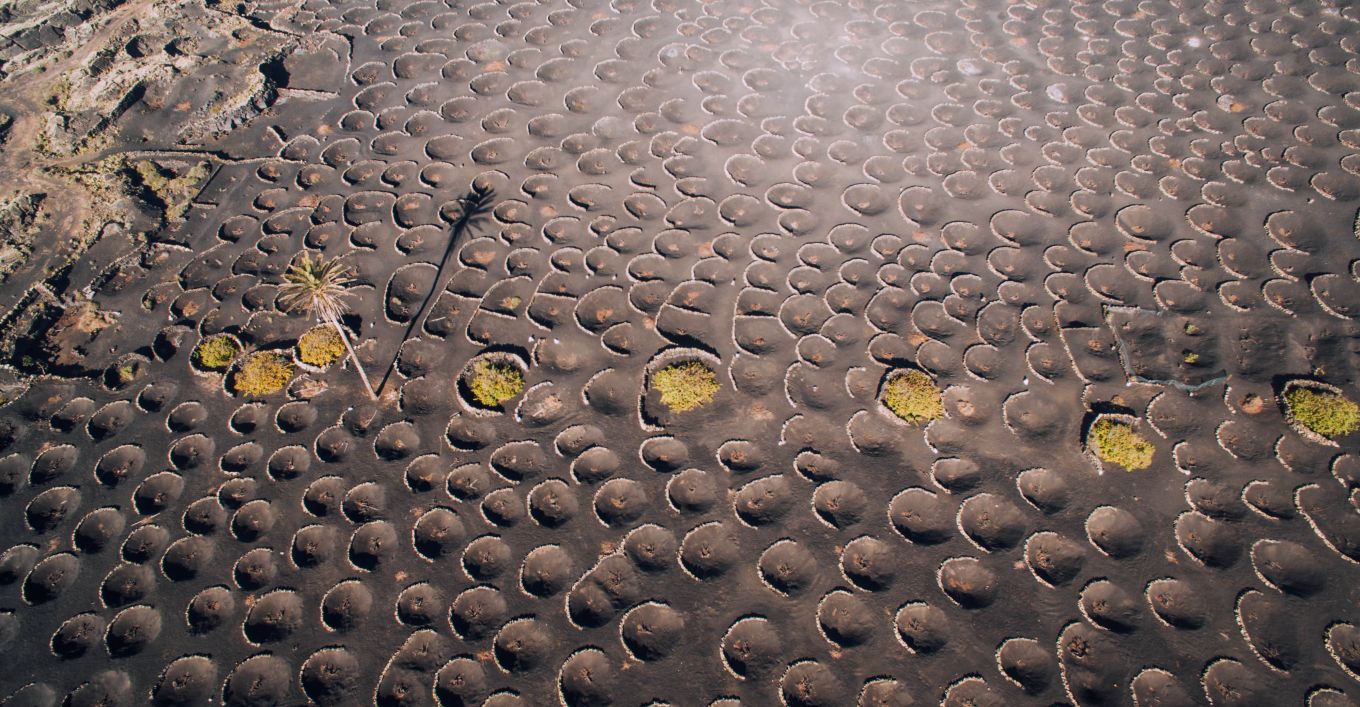January in the Vineyards
Welcome back to our monthly instalment of our series from a year in the vineyards of Lanzarote. We hope you had a great festive break and managed to enjoy some nice wines, possibly even from the Island! For new readers, here we give monthly updates for people interested in the wines and viticulture of Lanzarote month by month. You’ll find previous editions on the blog section of our website here.
Here in Lanzarote, we have had a very strange start to the year with the weather. A mix of Calima (a warm and dry wind from the Sahara Desert), south winds, and even some much-needed rain. This is a very unusual combination. The wine region of La Geria has been very busy of late. If you drive through in the early mornings, you will see a lot of the viticulture workers starting the last stage of pruning, cutting the vines all the way back to the trunk. It is the chance to dig out the volcanic ash that has accumulated in the pits and cleaning them of fallen leaves. It is also the time to rebuild the walls that have fallen in the winds or been brought down by the collapsing side of a pit. More back braking work! One thing you will notice is that the vineyards have their own timing of when to do the pruning. It can be tradition dates, falling full moons for example, or also simply down to workload. We caught up with Alfredo at Vega Volcan recently, he had been working on pruning his 3-hectare vineyard for the previous 3 full days, but the process originally started on 4th January… single handed!

Juan Antonio pruning from Bodega El Tablero
Back in the winery, there are further processes at work. In the previous edition, December in the Vineyards, we covered some stabilization techniques and racking procedures. For this month we will venture down a slightly different path, looking at some of the more complex wines. Lees aged or Lías as they are known in Spanish, which as the name suggested are produced using the lees (dead yeast cells), which add complexities to the wine and can also give them a higher propensity to age. It can sound a little off-putting, but it is the makeup of some of the richer, complex and expensive wines, Champagne or in our case a Brut Nature for example. Lees aging gives the wine, bready, toasty or nutty notes and the regular process of stirring the settled lees within the wine is known by the French term Bâtonnage. The longer the contact, the deeper these notes will become. The process can be carried out in stainless steel vats which would keep an element of freshness to the wine or in oak. This month’s Wine of the Month for instance has gone through Bâtonnage in stainless steel.

Victor from Bodega Vulcano inside his winery
Separately there is malolactic fermentation, which is a bit of a scientific minefield to say the least! Essentially, it is a bacterial fermentation which can happen naturally (typical in Lanzarote) or by inoculation of a commercial product. Either way, the process which is taking place is changing the acids (and thereby wine) from malic acid (sour/underripe flavours) to lactic acid. As the latter name would suggest, it is the same acid that is found in milk and therefore presents soft, creamy and buttery notes. This of course results in a significant change to the flavours and structure of wine. Almost all reds go through this process, but some whites are also put through this process too, though it’s not typical on the Island for whites. Off Island, oak aged Chardonnay would be the most well-known wine that is subject to MLF, as it is also know.
As you can imagine, both less aged and MLF wines will take more work, time and knowledge. While it often looks as though not much work is underway in the wineries, within the various vats and barrels at this time of year, these important processes are often underway.
Wine of the Month

This month we have opted for Bodega Vulcano de Lanzarote’s Vijariego. It’s a very unique wine as the grape variety Diego or Vijareigo as it is known widely through the Canaries, is one of the lesser produced, yet is increasingly popular, and for good reason. To further add uniqueness to this wine, Victor Diaz, owner and winemaker, ferments in oak and before transferring to stainless steel for Bâtonnage.
Its colour is pale bright yellow with a delicate bouquet of white flowers, green apple and melon, together with hints of aging notes particularly those of cloves and cinnamon.
On the palate its fresh and balanced acidity with a certain note of creaminess on the pal-ette, thanks to the aging process, which further contributes to its personality. It’s superb with baked wreckfish or a vegetable stew!
As always it’s available on our online Wine Shop for delivery in the UK, Ireland and across the EU.
We’re always delighted to hear your thoughts and feedback on all things wine!
All the best
Dan






